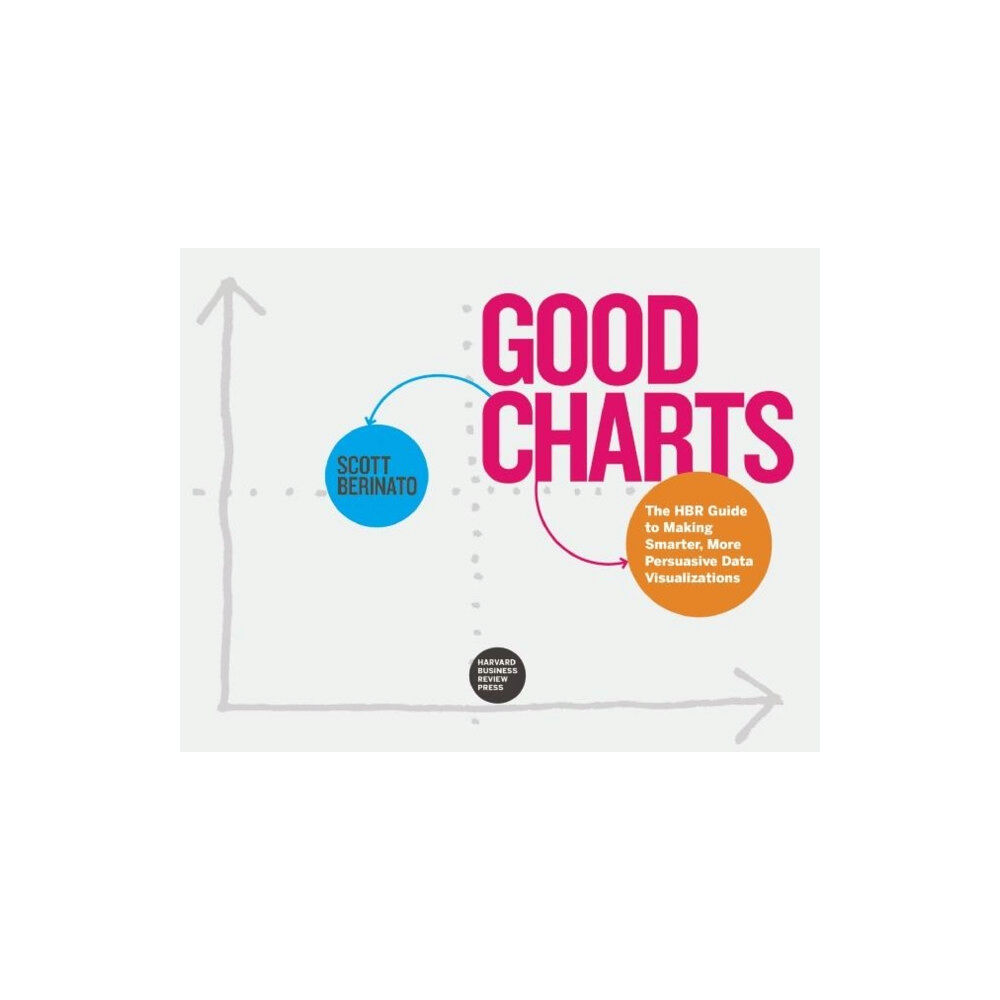Good Charts (häftad, eng)
Dataviz—the new language of business
A good visualization can communicate the nature and potential impact of informa...
A good visualization can communicate the nature and potential impact of informa...
369 kr
405 kr
Bara 2 kvar
Skickas inom 4 - 5 vardagar
Dataviz—the new language of business
A good visualization can communicate the nature and potential impact of information and ideas more powerfully than any other form of communication.
For a long time “dataviz” was left to specialists—data scientists and professional designers.
No longer. A new generation of tools and massive amounts of available data make it easy for anyone to create visualizations that communicate ideas far more effectively than generic spreadsheet charts ever could.
What’s more, building good charts is quickly becoming a need-to-have skill for managersIf you’re not doing it, other managers are, and they’re getting noticed for it and getting credit for contributing to your company’s success.
In Good Charts, dataviz maven Scott Berinato provides an essential guide to how visualization works and how to use this new language to impress and persuade.
Dataviz today is where spreadsheets and word processors were in the early 1980s—on the cusp of changing how we work. Berinato lays out a system for thinking visually and building better charts through a process of talking, sketching, and prototyping.
This book is much more than a set of static rules for making visualizations.
It taps into both well-established and cutting-edge research in visual perception and neuroscience, as well as the emerging field of visualization science, to explore why good charts (and bad ones) create “feelings behind our eyes.” Along the way, Berinato also includes many engaging vignettes of dataviz pros, illustrating the ideas in practice.
Good Charts will help you turn plain, uninspiring charts that merely present information into smart, effective visualizations that powerfully convey ideas.
A good visualization can communicate the nature and potential impact of information and ideas more powerfully than any other form of communication.
For a long time “dataviz” was left to specialists—data scientists and professional designers.
No longer. A new generation of tools and massive amounts of available data make it easy for anyone to create visualizations that communicate ideas far more effectively than generic spreadsheet charts ever could.
What’s more, building good charts is quickly becoming a need-to-have skill for managersIf you’re not doing it, other managers are, and they’re getting noticed for it and getting credit for contributing to your company’s success.
In Good Charts, dataviz maven Scott Berinato provides an essential guide to how visualization works and how to use this new language to impress and persuade.
Dataviz today is where spreadsheets and word processors were in the early 1980s—on the cusp of changing how we work. Berinato lays out a system for thinking visually and building better charts through a process of talking, sketching, and prototyping.
This book is much more than a set of static rules for making visualizations.
It taps into both well-established and cutting-edge research in visual perception and neuroscience, as well as the emerging field of visualization science, to explore why good charts (and bad ones) create “feelings behind our eyes.” Along the way, Berinato also includes many engaging vignettes of dataviz pros, illustrating the ideas in practice.
Good Charts will help you turn plain, uninspiring charts that merely present information into smart, effective visualizations that powerfully convey ideas.
| Format | Häftad |
| Omfång | 264 sidor |
| Språk | Engelska |
| Förlag | Harvard Business Review Press |
| Utgivningsdatum | 2016-05-17 |
| ISBN | 9781633690707 |
Böcker
- Format Häftad
- Antal sidor 264
- Språk Engelska
- Utgivningsdatum 2016-05-17
- ISBN 9781633690707
- Förlag Harvard Business Review Press
Specifikation
Böcker
- Format Häftad
- Antal sidor 264
- Språk Engelska
- Utgivningsdatum 2016-05-17
- ISBN 9781633690707
- Förlag Harvard Business Review Press


